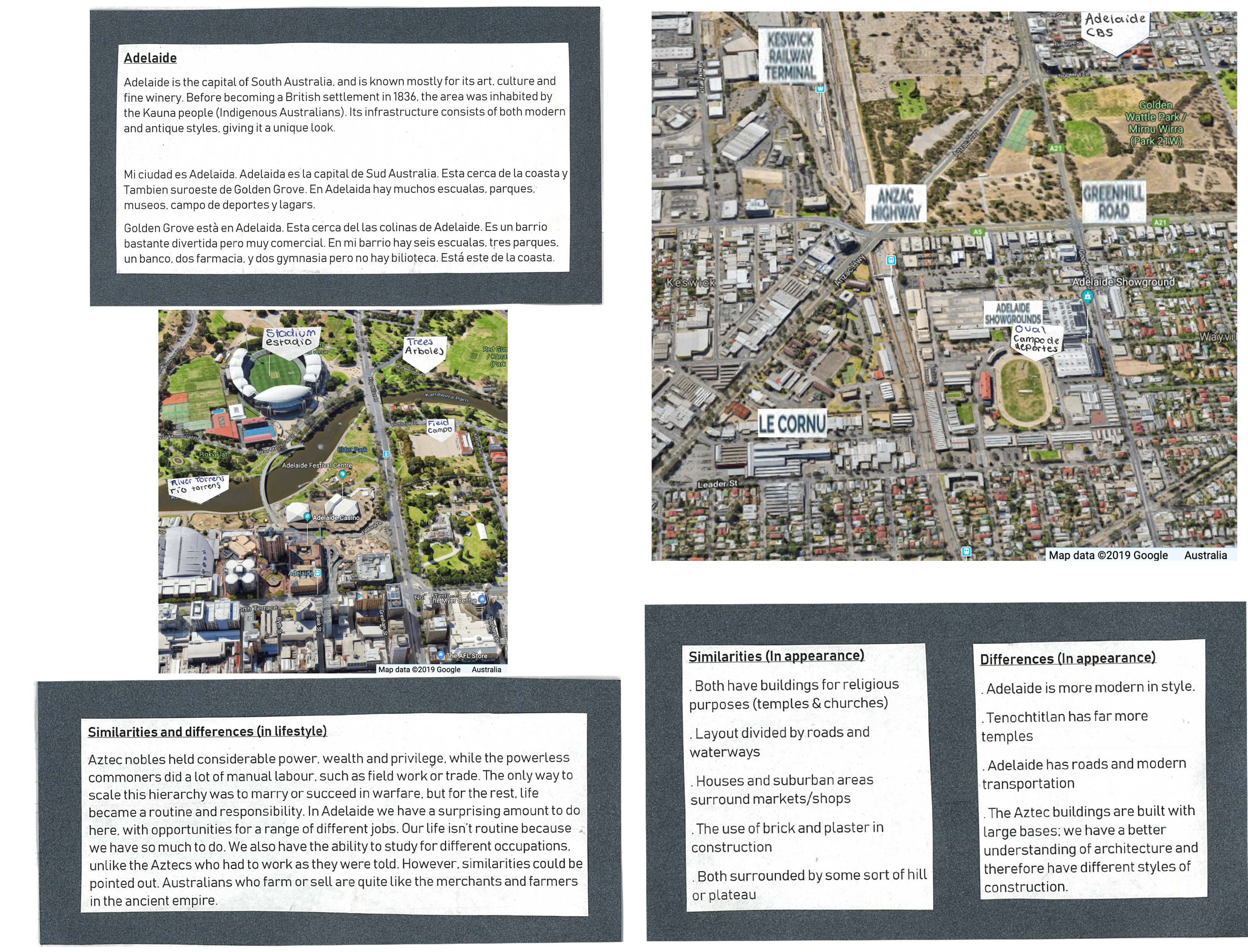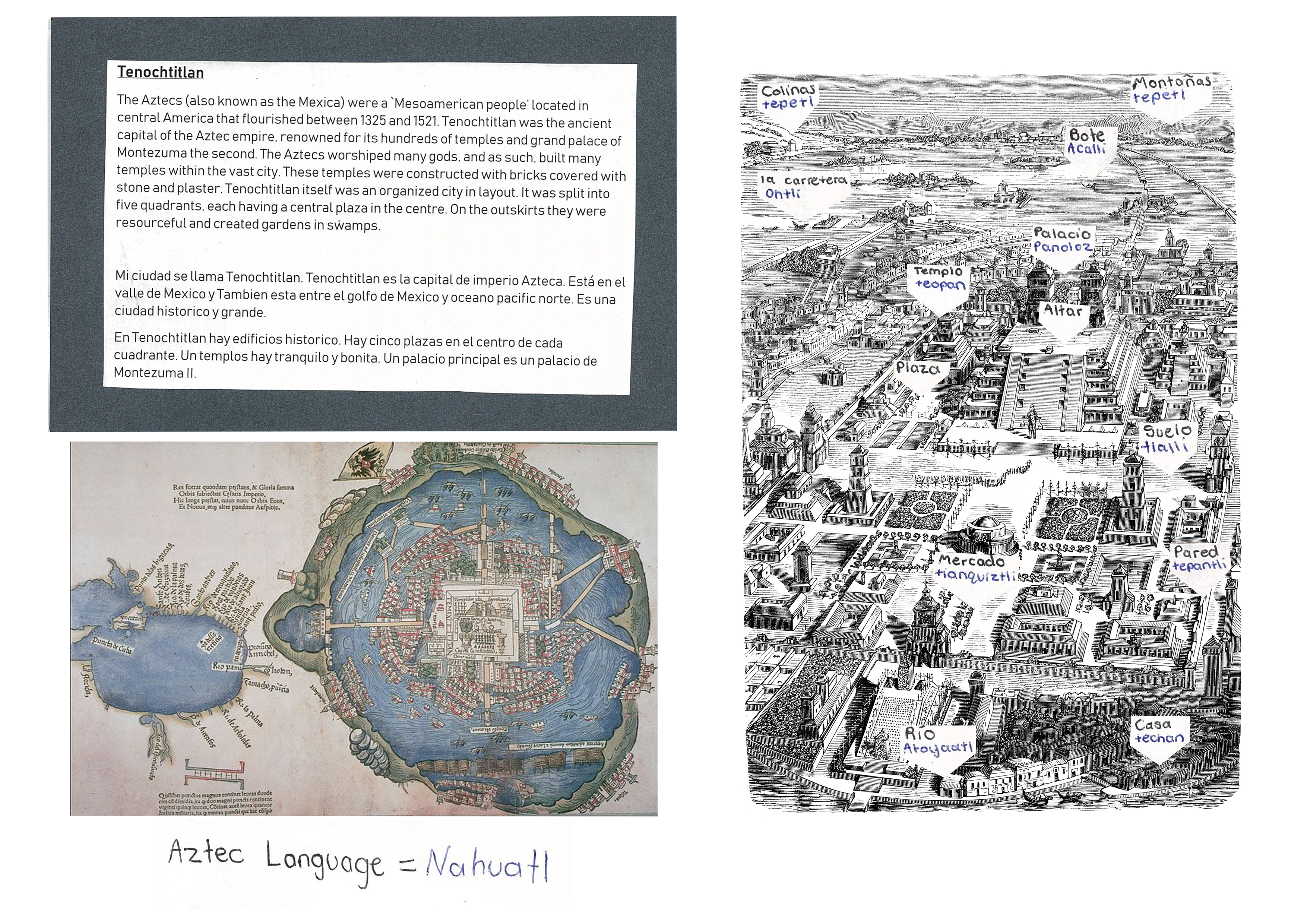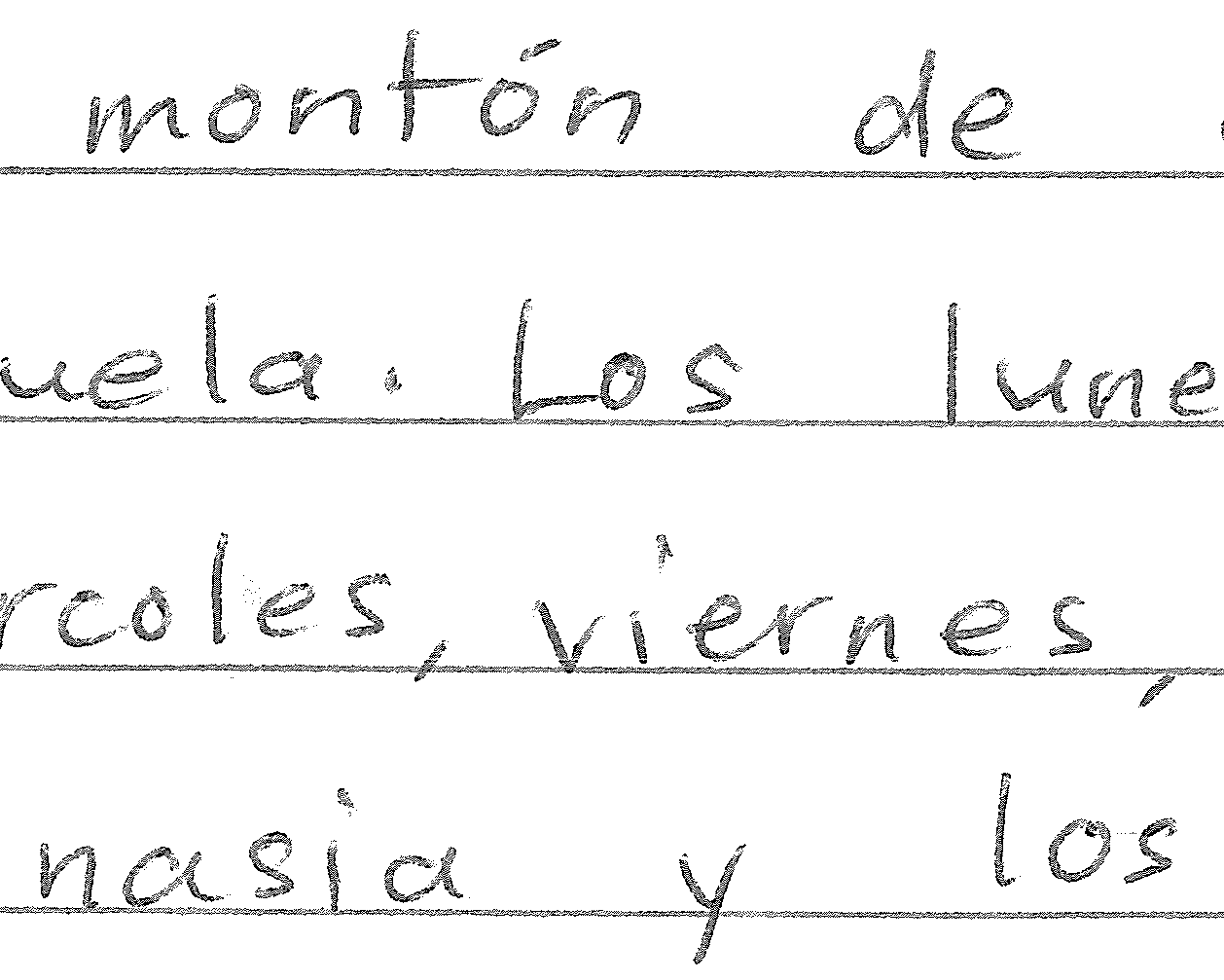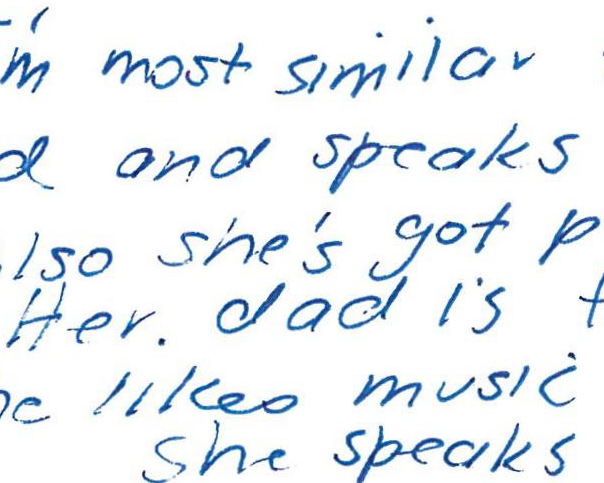Mi barrio y los pueblos antiguos de Latinoamérica
Summary of task
Students learnt about Indigenous South and Central American groups and conducted research into one group of interest to them.
The following task, in three parts, was set:
Part 1: Investigate how an Indigenous South or Central American group lived and designed their towns before the invasion of the Spanish Conquistadors.
Part 2: Create a visual representation and written description of a typical town or city of this Indigenous group.
- Visual representation in the form of map or plan
- Map or plan can be pictorial map or bird’s eye view
Part 3: Create a visual representation and written description of the suburb, city or town that you live in.
Visual representations
- Label at least diez man-made features in Spanish e.g. el castillo
- Include at least cinco natural features labelled in Spanish e.g. hills, river, mountains
- Label your map of the Indigenous town or city in Spanish and the Indigenous language
- Include an outline of South America or Australia which shows the location of your towns or cities on the continents
- Map should include the elements of BOLTS - border, orientation, legend, title and scale
- Presentation: Text type appropriate
Written descriptions
In Spanish, write one paragraph each about your suburb or city and the town or city of the Indigenous group you have investigated. Include:
- An introductory sentence e.g. Mi ciudad se llama….
- ¿Dónde está? At least 2 comments about where it is: compass points, near/far from somewhere, geographic location e.g. on the coast, in the hills, on the outskirts, in which state, country
- ¿Cómo es? At least 2 comments about what it is like: size, age, attractiveness, type of land use e.g. industrial, rural, residential, touristy.
- Describe tres of the buildings/facilities, e.g. Hay un polideportivo, es nuevo y moderno
- Give your opinion of the town/suburb e.g. me gusta mucho porque ….
Students were then asked to write a comparison in English of the similarities and differences between the two cities or towns e.g In what ways are the designs and buildings in our towns similar and different? In what ways do we live similarly to and differently from the Indigenous people of Latin America?








